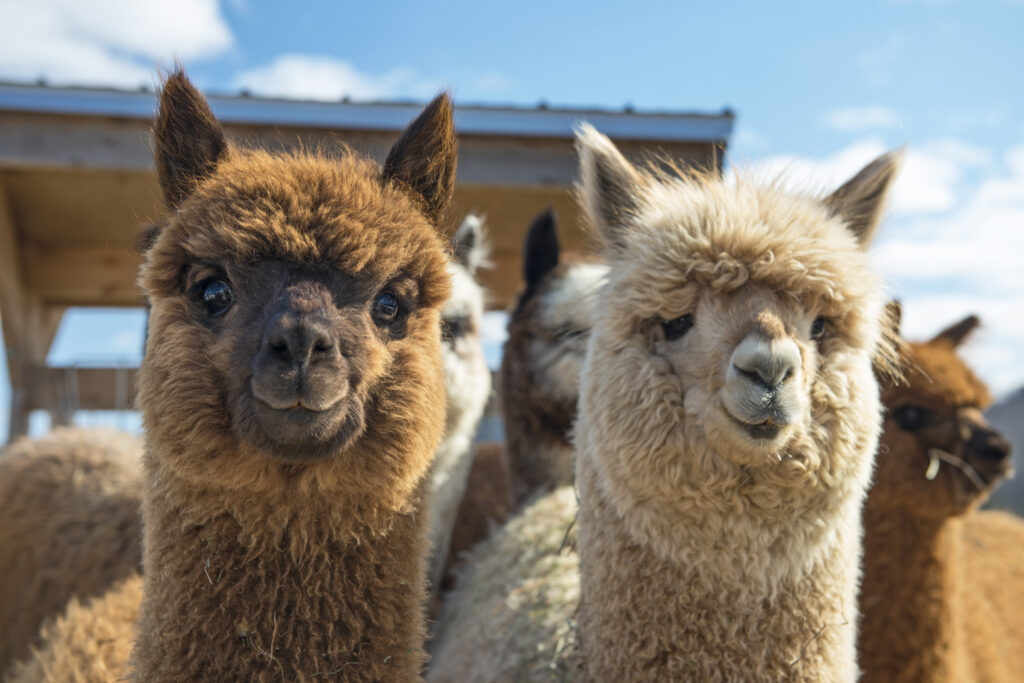Pack Animals: Can you tell the difference between a llama and an alpaca? Size, height and ears…–modernfarmer.com
You read it first in The Factory in Guide magazine.
There are many animals that resemble each other. For instance, the ostrich is a bigger but similar looking bird to the emu. Or take the kangaroo, it has a very similar but smaller looking cousin called the wallaby. Well, today we will talk about differences between the alpaca and the llama. Both look very similar, but are very different. And it is not uncommon to confuse them for one another. But they are both very cute hairy beasts!
Related to the camel family, the llamas and alpacas both may chew the cud (called rumination), but they do not have a hump of fat like camels do. They also do not have split hooves.
Alpacas are smaller than their cousins the llamas. Most alpacas are 48-54 inches tall (orand can weigh anywhere from 106 to 185 pounds (or more). Since they are a completely domesticated animal, alpacas can live for a pretty long time. If they are taken care of really well, they can live for up to 20 years or so.
The alpaca is found on marshy grounds at altitudes above 13,000 feet (4,000 meters). It is presently found in central and southern Peru and western Bolivia in South America. They are used strictly for their wool and fleece production.
Bred mainly for its fine wool, alpacas are normally sheared, or trimmed, every two years. Its wool is lightweight, strong, shiny, warm, and stands up to rain and snow.

A full-grown llama can reach a height of 1.7 to 1.8 m (5 ft 7 in to 5 ft 11 in) at the top of the head, and can weigh between 130 and 272 kg (287 and 600 lb). The alpaca has small, pear shaped ears, while the llama has longer banana shaped ears.
The llama eats many types of grass and other plants. It is a hardy animal that can survive for a long time without water. For these reasons, people often use llamas to carry loads in the Andes Mountains. People also use llama hair to make clothing, rugs, and rope.
Using llamas as livestock guards in North America began in the early 1980s, and some sheep producers have used llamas successfully since then. Some would even use them to guard their smaller cousins, the alpaca. They are used most commonly in the western regions of the United States, where larger predators, such as coyotes and feral dogs, are prevalent.
Recently, another helpful purpose of the llama has come about. Llamas have started showing up in nursing homes and hospitals as certified therapy animals. Rojo the Llama, located in the Pacific Northwest was certified in 2008. The Mayo Clinic says animal-assisted therapy can reduce pain, depression, anxiety, and fatigue. This type of therapy is growing in popularity, and there are several organizations throughout the United States that participate. Because really, who can resist a cute hairy beast!!
—Carol Lyons, Assistant
Discovery Mountain
Scripture taken from the New King James Version, Copyright 1982 by Thomas Nelson. Used by permission. All rights reserved.
Learn More About This Fact
For more interesting facts, click on the buttons below!